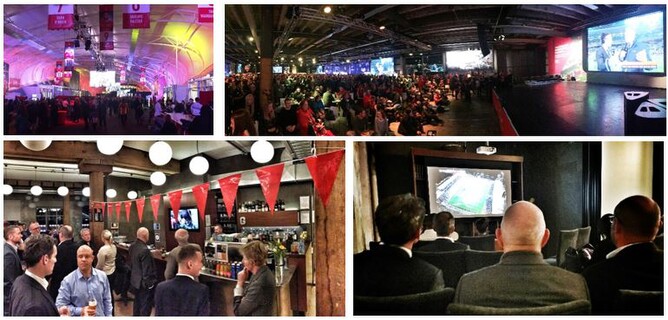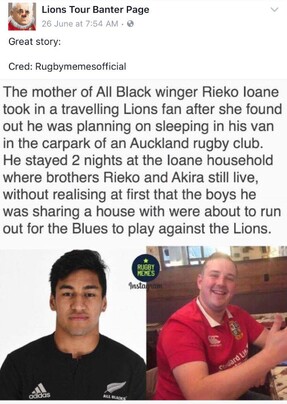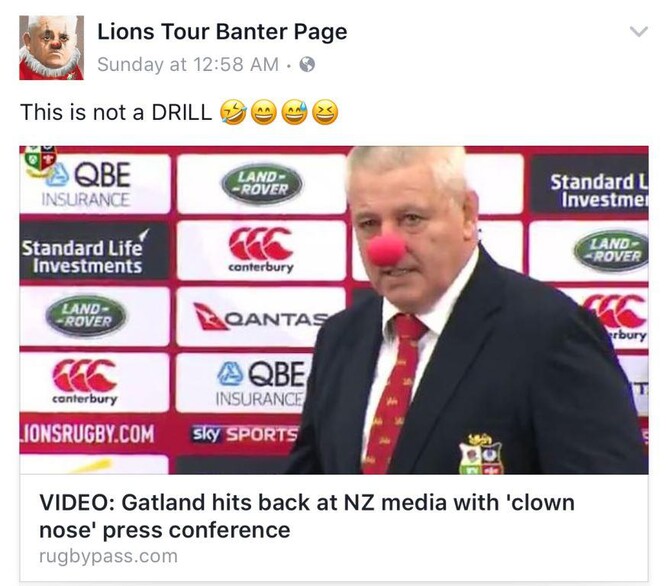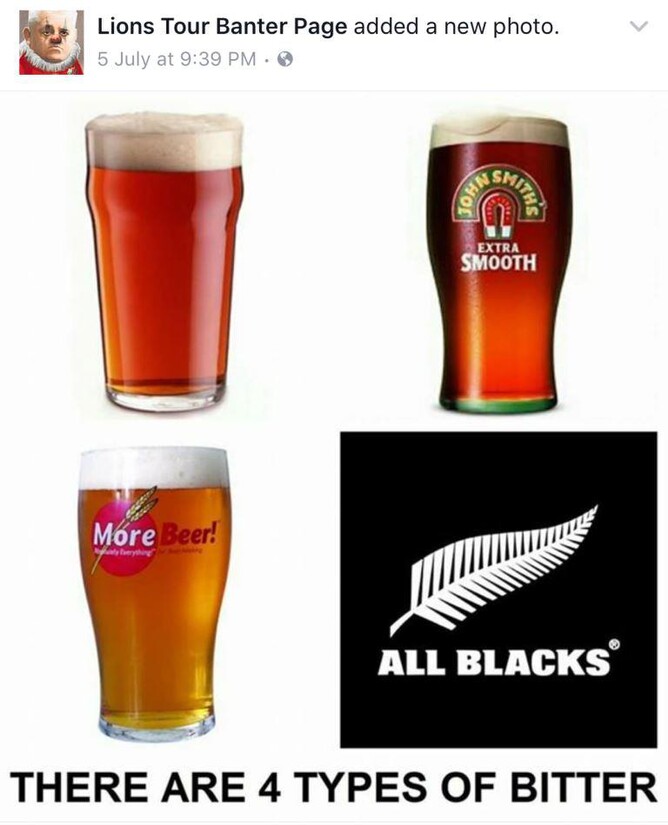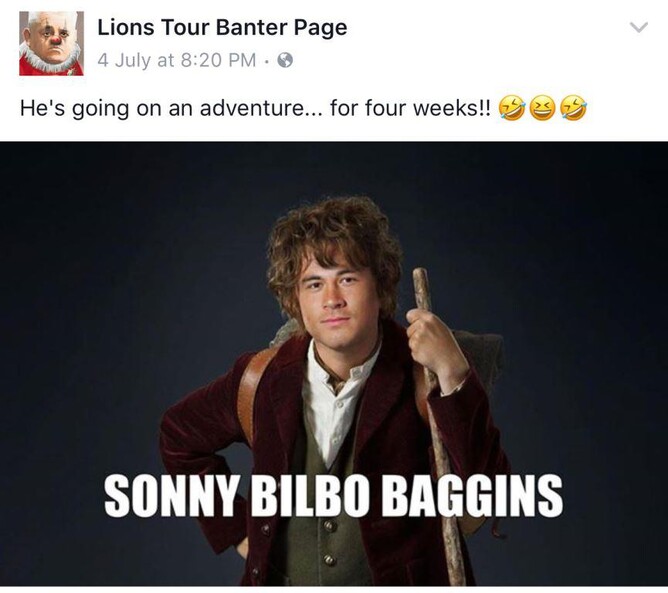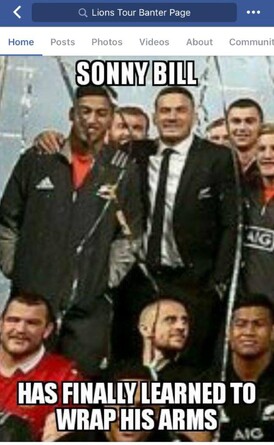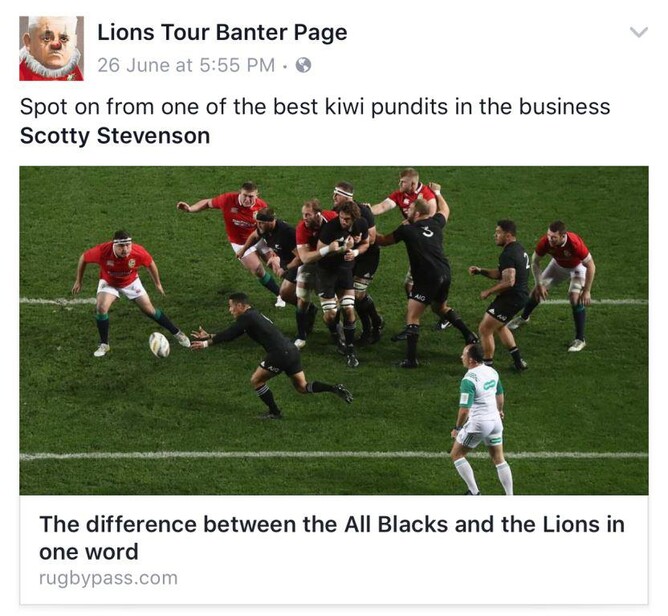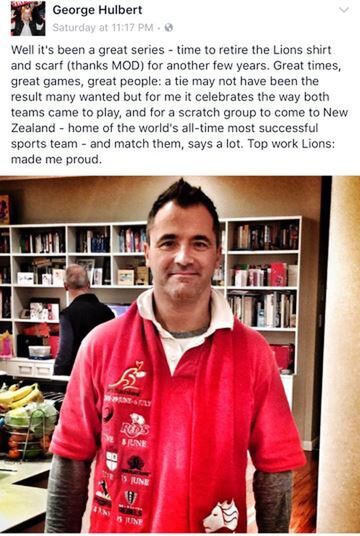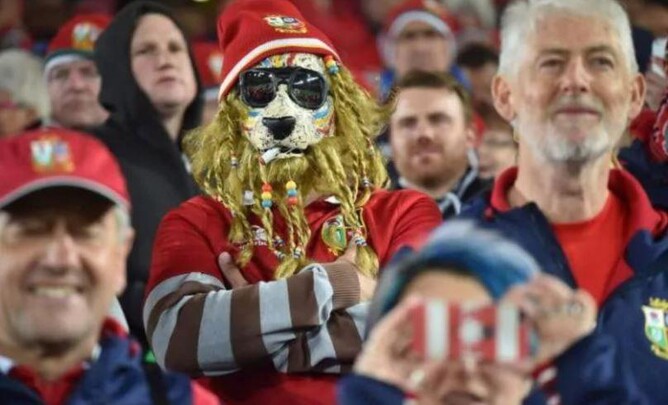So you thought that the Lions tour was just about rugby? Not so, according to Lions supporter George Hulbert, who says that all the banter, media and social media shenanigans during the tour offer lessons for anyone looking to engage through communication:
As a Briwi who arrived in New Zealand one month before the last British & Irish Lions tour in 2005, the return of the Lions this year for a monumental smash-a-thon - that included matches against all five Kiwi franchises and three against the All Blacks - was the cause for much excitement.
As ever, the 25,000+ travelling fans made a hugely positive impression as they sang and drank their happy way around the country. The team and its (Kiwi) coach Warren Gatland inevitably came in for considerable stick in the media, particularly after an initial scratchy win and then a loss, before firming into a force that ended the three-match All Blacks series tied: quite a result given they were essentially a scratch side up against the world’s all-time single most successful sports team.
Results (and refereeing decisions) aside, the events of the tour also offer some pointers to me, as someone who is always interested in communication, in terms of how to communicate well:
Get amongst it
You can’t expect to engage people if you don’t get out there. Going to games, experiencing the lively Shed 10 atmosphere and even hosting a work event around one of the mid-week games allowed me to savour the flavour of the tour in many different ways. It also gave me opportunities to talk to people, hear their thoughts and get stuck into the banter. Good communication is always a two-way street.
Tell GREAT stories
There were some real crackers during the tour. However, for me the standout was the tale of lonely travelling Lions fan Alex Edwards who ended up kipping on a mattress at the house of emerging All Blacks Rieko and Akira Ioane at the invitation of their mum Sandra when his accommodation fell through.
Unaware who the two large men were when they came home later, Alex got the shock of his life when he discovered who his hosts were.
Unsurprisingly, the story exploded around the world: a great story that appeals to anyone regardless of whether they are rugby fans or not.
So, if you are looking to engage people with what you have to say, how can you focus only on telling the stories that people want to read regardless of where they come from?
Keep going – even when the world seems against you
The Lions copped their fair share of flak in the media throughout the tour, but rarely more so than when the New Zealand Herald carried a caricature of Lions coach Warren Gatland as a clown in a print edition.
No stranger to doing this (the Herald has done this now to three opposing coaches), the cartoon created quite a storm of debate at a time when the Lions were struggling to put decent results together.
Their subsequent on-field resurgence – and ability to laugh at themselves (see the ever-excellent Lions Tour Banter Page on Facebook, right, for the final press conference after the Lions had drawn the series) gave us a lesson in taking criticism on the chin and then just getting on with it.
Correct inaccuracies
Eye patch sales must have gone through the roof during June and July 2017 for all the talk (from fans and media on both sides) of who should / should not have scored what and when. The referees – most excellently sponsored by Specsavers, great work – in particular came in for major stick.
I rarely get stuck into this sort of debate because I am often wrong about who did what and when. However, one post (thanks again Lions Tour Banter Page on Facebook – and you’ll hear more from them in this post) underlined the importance of correcting inaccuracies when they pop up. Done with gentle humour, to me it was even more effective:
Sometimes you cannot let something lie: you have to correct wrong information out there, but do it simply and with care – then move on.
Keep your sense of humour
If there is one thing that Lions fans are known for, it is their sense of humour. Two examples of using humour to make a point (among thousands during the tour) really made me laugh:
Firstly, after the second test match – won by the Lions 24-21 on a filthy night in Wellington – it seemed that some Lions fans were getting fed up with all the banter coming at them about how the Lions won the match only because the All Blacks were without star player Sonny Bill Williams for much of the match after he was red carded for not using his arms in a collision.
The response?
Magic. And then, addressing the incident itself, the more direct banter response to the issue at hand:
Beautiful photoshop skills and a lovely play on the Kiwi hobbit experience.
If that hadn’t put it to bed, at the end of the series, when all the players came together for a rather awkward ‘everyone holding the trophy’ photo, one last dig:
Possibly one joke too far, but perhaps also an opportunity too good to miss?
Analyse thoroughly
Without a doubt the best, most insightful thing I read during the whole tour was a piece written by Scotty Stevenson on the rugbypass.com website. An analyst for Sky TV, Scotty is always good, but his article on the topic of trust on the field – written just after the first test match - was brilliantly written and argued.
Furthermore, it looked carefully beyond the hyperbole to examine aspects of style and substance that I didn’t see considered anywhere else, and certainly not in the more mainstream, clown-nosed, media.
It goes to show that carefully considered and well outlined analysis is often the difference between the good and the great communicators.
Use the opposition’s chants against them
“Waisake Naholo! Wai-sake Naholo!” was the chant that greeted Lions fans at the beginning of the tour. It’s a great chant, there’s no doubt about it.
But, as it turned out, so was the Lions riposte, sung to the same tune: “Oh Maro Itoje! Oh Maro Itoje!” celebrating the outstanding Lions lock forward. I think I heard that version more over the later matches than the Naholo version.
And then contrast this approach with the clunky (and I’d say total) failure of Tūtira Mai Ngā Iwi (Stand Together), played endlessly in stadia and council venues. Meant to galvanise people in the same way as the spine-tingling Skinner-Baddiel ‘Football’s Coming Home’ song from Euro 96 – go on, watch it, you’ll be richer for doing so – it was a total clunker. Everyone cringed at the venues I attended, ABs fans or not.
What this reinforced is similar to the great stories point above: if you’re going to go out there with content, you’d better make it good if you want people to engage with it – or they might use yours against you.
Enjoy your life
This photo of me and my mate Nige in the fan zone (it’s actually a green screen image as we sat in a trailer) sums up much of my Lions experience: a lot of fun.
If you’re enjoying your life and what you’re doing in it, you’re bound to be more of an enthusiastic communicator than someone who’s dead behind the eyes. Get up and get at it – you’ll engage more people that way.
Find ways to celebrate
And so we come to the matter of the tour’s end – a draw. I think I am one of the very few people who thought (as you can see in my Facebook post that night, below) that for a bunch of players to come together from nothing and, over the course of two months, not just compete with but match the mightiest team in any sport on the planet was quite an achievement. That’s a cause for celebration if you ask me.
I appreciate that many All Blacks fans felt let down by the experience (and in particular by the refereeing that led to the final test draw), but I’d ask you to consider that as a message it can only be a good thing: interest in the sport can only be enhanced world-wide if people see the potential to compete. Everyone should go home with their heads held high.
But then I would say that, wouldn’t I? I am a Lions fan.
One last thing: a big THANK YOU to the Lions Tour Banter Page on Facebook: I really enjoyed your work!


